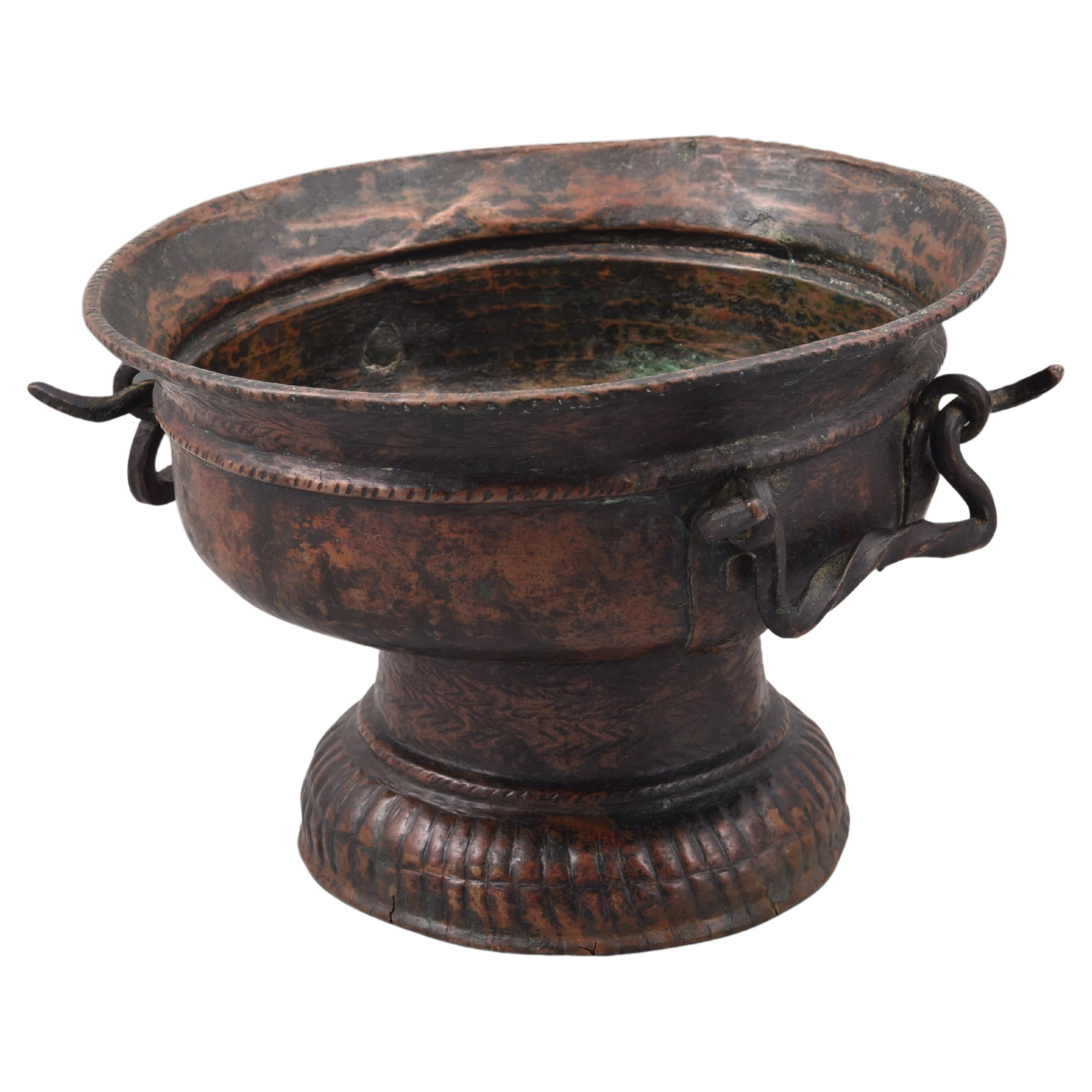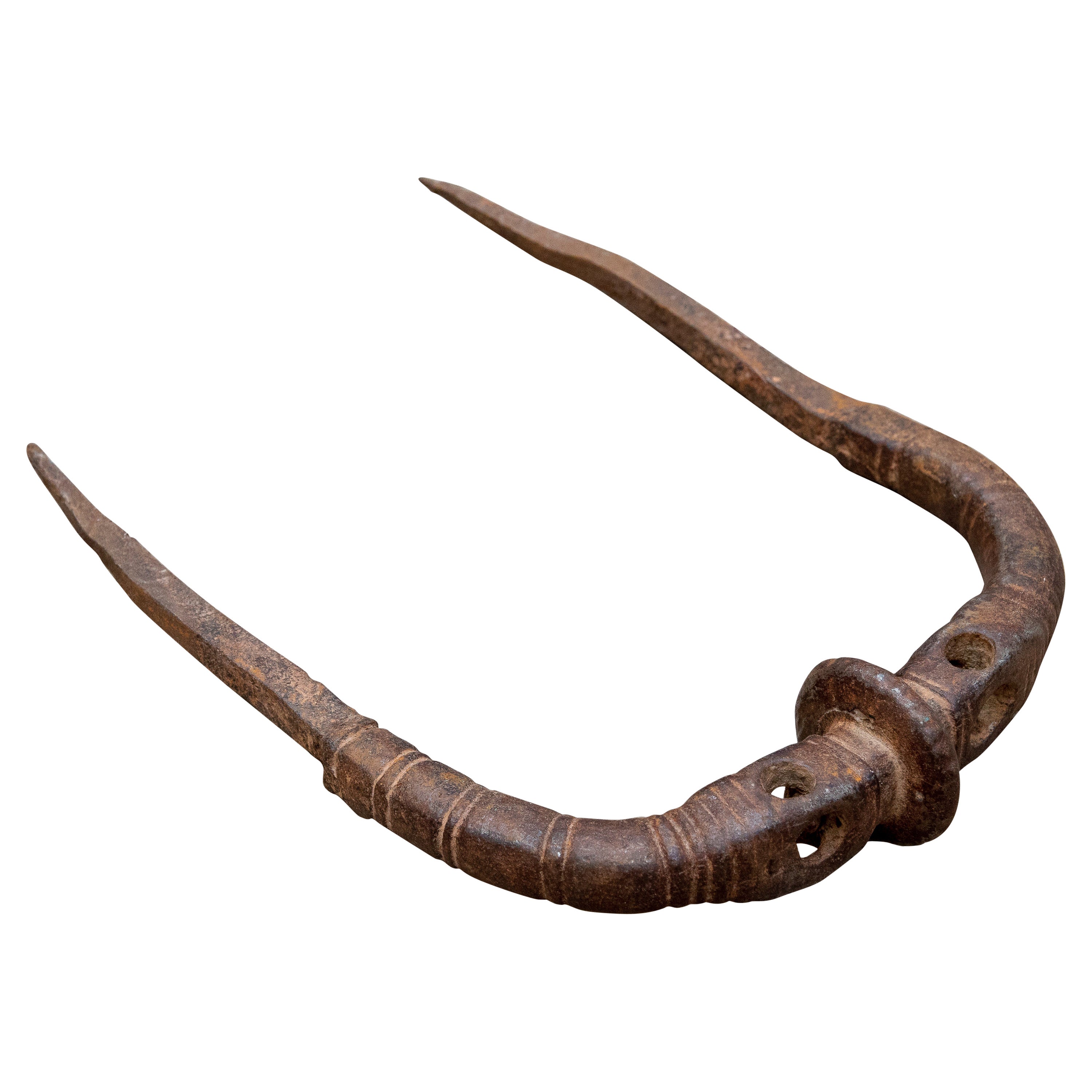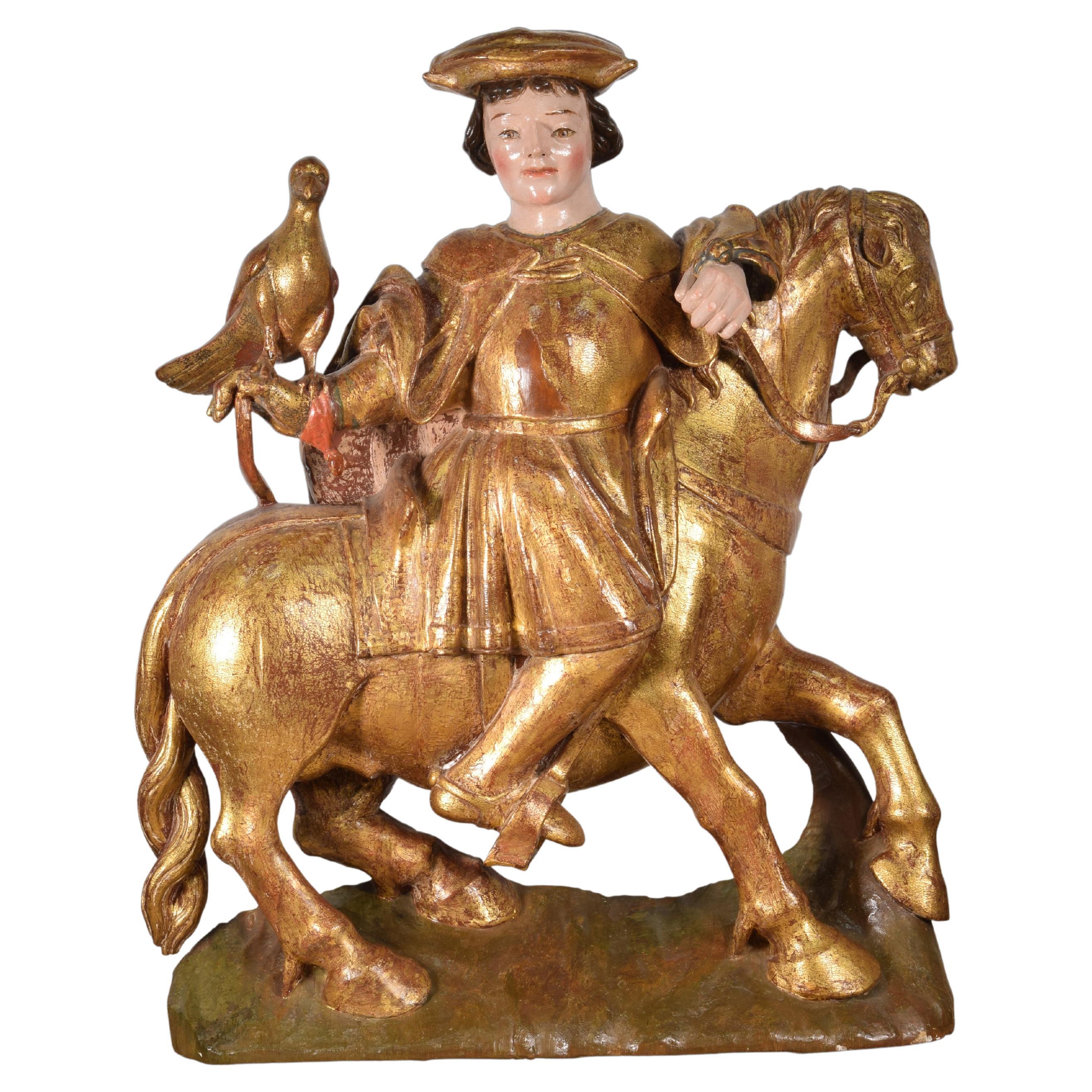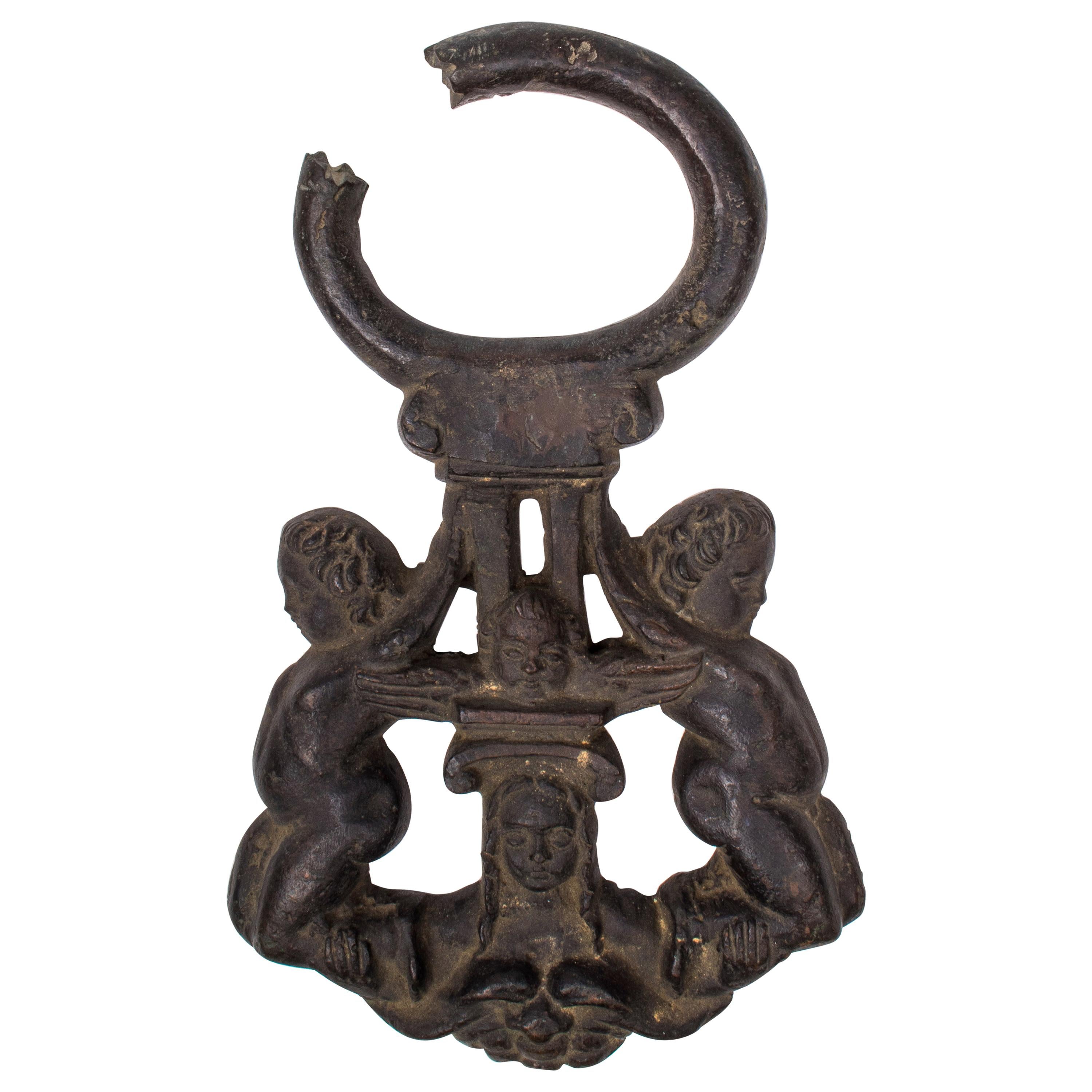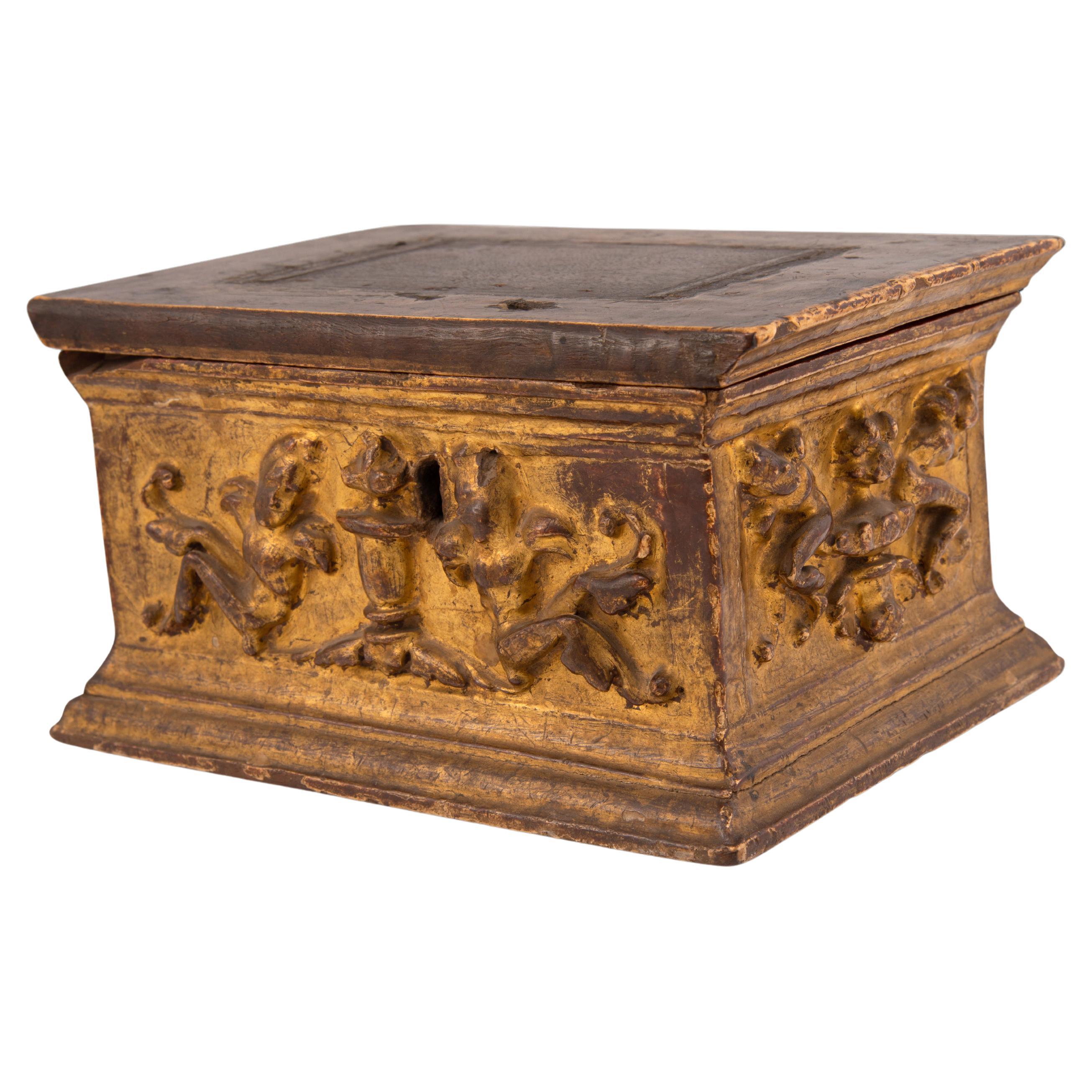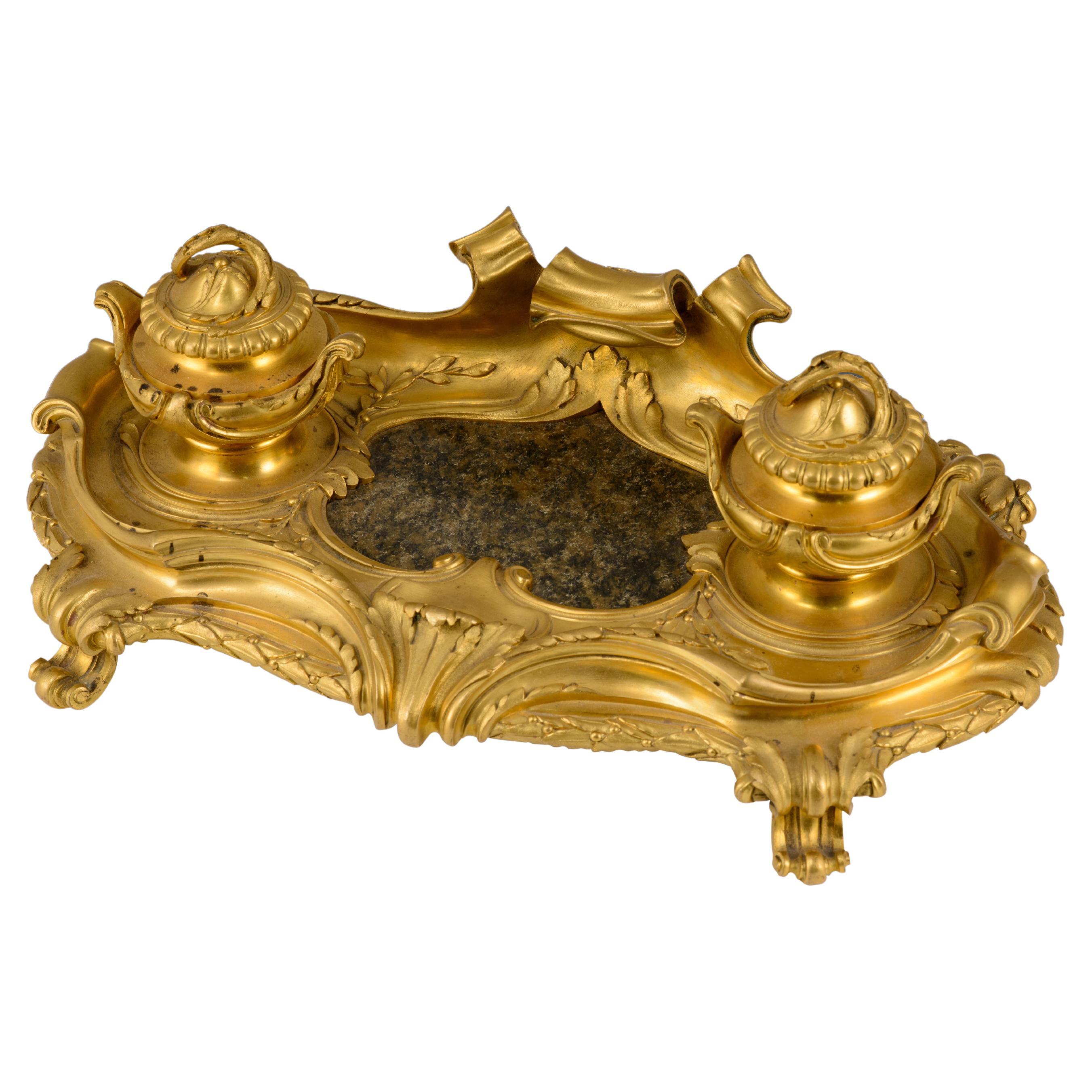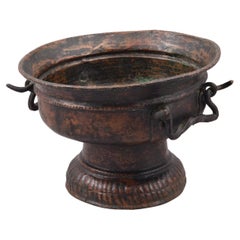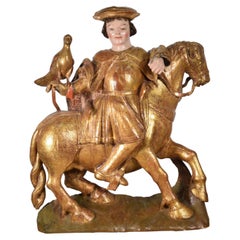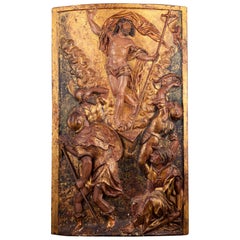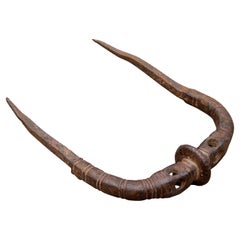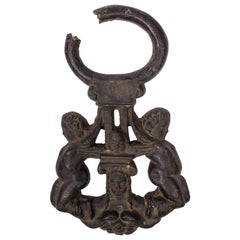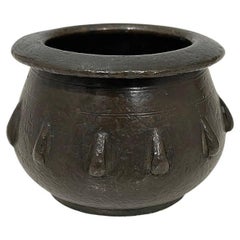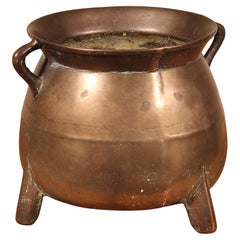Items Similar to Frame for a hand brazier. Bronze. Possibly Spanish School, 16th century.
Video Loading
Want more images or videos?
Request additional images or videos from the seller
1 of 10
Frame for a hand brazier. Bronze. Possibly Spanish School, 16th century.
About the Item
Frame for a hand brazier. Bronze. Possibly Spanish School, 16th century.
A polygonal bronze frame for a brazier or table, raised on legs and featuring a decoration of human figures at the top, as a finial, and a series of openwork scenes on the front between Doric or Tuscan columns (human figures surrounded by plant and grotesque elements; two panels with handles), clearly influenced by Classicism.
Weight: 1.1 kg. · Size: 19x19x12 cms
International Buyers – Please Note: for those articles that need Export Permits (those older than 100 years), the obtaining of the Permit will be processed without additional expenses (if you choose the seller sends it to you), but the period for the obtention of it may vary from 10 to 35 days.
- Dimensions:Height: 4.73 in (12 cm)Width: 7.49 in (19 cm)Depth: 7.49 in (19 cm)
- Style:Renaissance (Of the Period)
- Materials and Techniques:
- Place of Origin:
- Period:16th Century
- Date of Manufacture:16th century
- Condition:Wear consistent with age and use. Minor losses. Minor fading. Check pictures, sold as it is.
- Seller Location:Madrid, ES
- Reference Number:Seller: ZF14221stDibs: LU2951345240682
About the Seller
4.9
Vetted Professional Seller
Every seller passes strict standards for authenticity and reliability
Established in 1985
1stDibs seller since 2017
341 sales on 1stDibs
Typical response time: 6 hours
- ShippingRetrieving quote...Shipping from: MADRID, Spain
- Return Policy
Authenticity Guarantee
In the unlikely event there’s an issue with an item’s authenticity, contact us within 1 year for a full refund. DetailsMoney-Back Guarantee
If your item is not as described, is damaged in transit, or does not arrive, contact us within 7 days for a full refund. Details24-Hour Cancellation
You have a 24-hour grace period in which to reconsider your purchase, with no questions asked.Vetted Professional Sellers
Our world-class sellers must adhere to strict standards for service and quality, maintaining the integrity of our listings.Price-Match Guarantee
If you find that a seller listed the same item for a lower price elsewhere, we’ll match it.Trusted Global Delivery
Our best-in-class carrier network provides specialized shipping options worldwide, including custom delivery.More From This Seller
View AllBrazier, Copper, Possibly Castile, 16th Century
Located in Madrid, ES
Brazier. Copper. Possibly Castile, 16th century.
Brazier made of copper with a circular foot decorated with vertical bands, a low tubular shaft enhanced with a fine roped molding and a semicircular body, with a wide mouth that flares outwards, and two halfrectangle-shaped metal handles with a torso part on the sides. Of the piece. These types of pieces were used both in civil and ecclesiastical interiors with the aim of heating the occupants of the room as much as possible, and their conservation is rare because they are utilitarian elements that were discarded over time or due to be damaged They used to be objects destined for the upper class, and followed the same typologies whether they were destined for a sacristy or a private residence. This case, possibly intended for use in the sacristy, shows a typical typology in the Spanish school of the time. Compare, for example, with the brazier present in The Birth of the Virgin Mary of the Altarpiece assembled around 1520 by Pedro de Guadalupe from Valladolid and found in the church of San Esteban...
Category
Antique 16th Century Spanish Renaissance Fireplaces and Mantels
Materials
Copper, Other
Possibly Saint Hubert or Saint Eustace, Wood, Spanish School, 16th Century
Located in Madrid, ES
Possibly Saint Hubertus or Saint Eustace. Carved, polychrome and gilded wood. Spanish school, 16th century.
Carving in polychrome and gilded wood, sim...
Category
Antique 16th Century Spanish Renaissance Religious Items
Materials
Wood
Devotional plaque with Saint Jerome. Bronze. Spanish school, 16th century
Located in Madrid, ES
Devotional plaque with Saint Jerome. Bronze. Spanish school, 16th century.
Rectangular devotional plaque made of bronze, with a frame and a ring at the top and a figurative decorati...
Category
Antique 16th Century European Renaissance Religious Items
Materials
Bronze
“Ressurrection”, Polychromed Wood, Spanish School, 16th Century
Located in Madrid, ES
The relief was probably a door of the Sagrario. The piece follows a customary decoration in the tabernacles of the Renaissance and the Baroque. Compare, for example, with the sevente...
Category
Antique 16th Century Spanish Renaissance Religious Items
Materials
Other
Chest. Carved wood, metal. Spanish school, 16th century.
Located in Madrid, ES
Chest. Carved wood, metal. Spanish school, 16th century.
Rectangular casket with a flat lid decorated on the outside with a series of figurative reliefs in a symmetrical arrangemen...
Category
Antique 16th Century Spanish Renaissance Decorative Boxes
Materials
Metal, Other
Saints John and Matthew, Polychrome Wood, Possibly, Burgos School, 16th Century
Located in Madrid, ES
Pair of reliefs, San Juan and San Mateo. Polychrome wood. Possibly, Burgos school, 16th century.
Pair of carved and polychrome wood reliefs that each show a seated human figure wri...
Category
Antique 16th Century Spanish Renaissance Wall-mounted Sculptures
Materials
Other
You May Also Like
16th Century, Spanish Wrought Iron Handle
Located in Marbella, ES
16th Century Spanish wrought iron handle.
Category
Antique 16th Century Spanish Paperweights
Materials
Wrought Iron
16th Century Venetian Bronze Door Knock with Children Figures
Located in Marbella, ES
16th century Venetian bronze door knock with children figures on the sides and faces in the middle.
Category
Antique 16th Century Italian Doors and Gates
Materials
Bronze
16th Century Spanish Moorish bronze mortar
Located in Delft, NL
16th Century Spanish Moorish bronze mortar
A small round bronze dark brown patinated shaped mortar, resting on a round base. The exterior decorated with vertical rib pattern from t...
Category
Antique 16th Century Decorative Bowls
Materials
Bronze
Bronze Pot, 16th Century
Located in Brussels, Brussels
Superb Flemish Renaissance bronze pot from the 16th century.
Superb patina and in very good condition.
Category
Antique 16th Century Belgian Renaissance Decorative Bowls
Materials
Bronze
$1,456
Renaissance Inkwell Calamelli workshop, Italy, Faenza, second half of the 16th
By Virgiliotto Calamelli
Located in Milano, IT
Inkwell
Calamelli workshop (attr.).
Faenza, second half of the 16th century
Height 4.33 in; length 8.07 in; depth 2.95 in (11 cm; 20.5 cm; 7.5 cm)
Weight: 0.800 lb (363 g)
State of conservation: some chipping to the top of the mask around the mouth. Handle glued, without any restorations; minor chips in some raised areas.
This object has the shape of a foot wearing Greek-style footwear, as can be seen in some raised areas. The foot is anatomically modeled with bare toes, while the ankle is partially covered by the footwear. On the heel, there is a small circular handle to support the object. The mouth of the container is shaped like a mask. The interior, completely enameled, suggests that the piece was intended to be used as an inkwell or to contain some other liquid. The base, however, is not enamelled.
The painted decoration, scant and brief, consists of rapid cobalt blue shading between the toes of the foot, with more precise emphasis on the nails. It is accompanied by yellow citrine accents to enhance the forms. The mask is painted with the tip of the brush, to accentuate the tense nature of the eyes and to accentuate their outline. Thin strokes of yellow-orange line the interior of the mouth.
Since the Renaissance, this decoration has been referred to as "compendiaria" and it characterizes the period of production extending from the mid-16th century to approximately the middle of the following century. It significantly influenced tastes at the time. It evolved from the polychrome style "istoriato" and transformed into a new style that "summarized" (compendia), or condensed, the ornamentation of the works into a few colors, placing greater prominence on the shapes. It was often inspired by metal specimens. Since the Renaissance, this decoration has been referred to as "compendiaria" and it characterizes the period of production extending from the mid-16th century to approximately the middle of the following century. It significantly influenced tastes at the time. It evolved from the polychrome style "istoriato" and transformed into a new style that "summarized" (compendia), or condensed, the ornamentation of the works into a few colors, placing greater prominence on the shapes. It was often inspired by metal specimens.
This artwork finds parallels in similar objects all characterized by this refined style and produced in the city of Faenza and other Italian centers starting from the mid-16th century.
The closest comparable example in majolica is a foot acquired by the British Museum in 2011 (inv. 2011, 8008.1). This was previously published by Carmen Ravanelli Guidotti in 1996 and later by Dora Thornton in 2016 during the conference on Renaissance ceramics...
Category
Antique 16th Century Italian Renaissance Inkwells
Materials
Maiolica
16th Century Partly Gilt Carved Wood Frame
Located in Saint-Ouen, FR
This rare Venetian frame entirely carved in high-relief shows a rich decor of scrolls, garlands, daisy flowers and thistles. At the four corners of the frame are depicted large acant...
Category
Antique 16th Century Italian Renaissance Picture Frames
Materials
Wood
